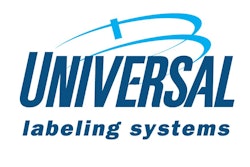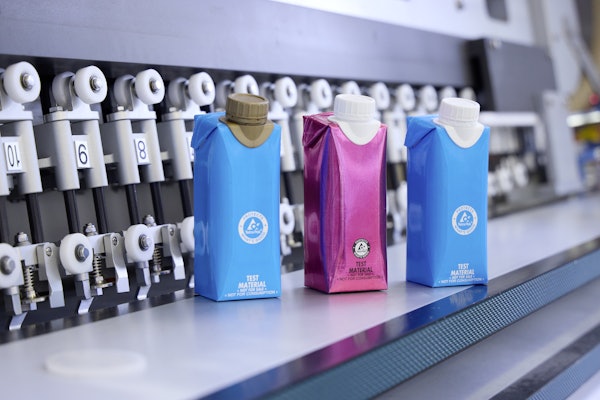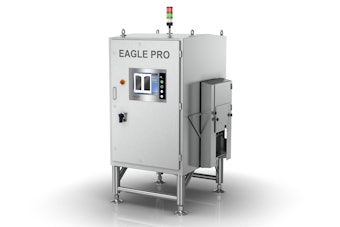Even before the recent global financial turmoil, pharmaceutical, biologic, and medical device manufacturers faced considerable economic pressures. Corporate efforts to control costs continue to trickle down to the packaging function, with packaging line efficiencies more closely scrutinized, and material decisions made based on performance and economics.
“Pharmaceutical companies are under cost-control pressure, and medical device companies also need to hold down prices because of pressure from third-party insurance companies, Diagnosis-Related Groups [DRGs], and other managed care plans,” says Bill Martineau, senior healthcare consultant at The Freedonia Group (www.freedoniagroup.com). DRGs refer to a system Medicare uses to determine payment procedures. “So product manufacturers will [look] to hold down their packaging costs and increase profitability,” Martineau adds.
Contract packaging firms, or CPs, represent one cost management option. “To keep costs down, the producers of medical device products and pharmaceuticals want to acquire [a CP’s] packaging efficiencies,” says Martineau. Other options could be “a change in packaging materials and/or the adoption of better processes or equipment,” he adds. “It’s a trade-off between quality and cost. Companies want to keep costs as low as they can so they are looking at all production costs, which include packaging.”
The Freedonia consultant addressed several key issues and trends in the life sciences sector in an exclusive interview. Following cost and economic-related issues, he discussed a list of hot-button topics, and how packaging fits into each of them. His comments appear after each of the bulleted points below:
• Preventing infections. Hospital-acquired or healthcare-acquired infections are linked directly or indirectly to nearly 100,000 deaths annually, according to numbers reported by the Centers for Disease Control Prevention and other agencies. Packaging has to provide the proper barrier properties and the necessary containment to keep medical devices sterile. They are either sterilized in the hospital or at a central processing facility. The packaging has to preserve the sterile integrity of the product. It also has to provide ease of use so the healthcare staff won’t contaminate product when removing it from its package, and it must safeguard against potential needle sticks.
• Increasing home health care. The (medical community) wants to transfer patients from hospitals when they’re ready for home care and can inject their own drugs, like diabetic patients do with insulin. Many packaging companies are developing self-injecting devices in order to enable the patients requiring frequent injections to self-administer drugs rather than going to the doctor’s office every time. It cuts down costs and makes the process more efficient and convenient. The self-injecting devices help prevent infection, preserve product integrity, and also promote patient compliance. Vetter Pharma (www.vetter-pharma.com) is a large supplier of these devices, although there are a number of providers.
• Biologic-based therapies. Packaging material advances are likely as biotechnology developments continue. There are over 600 of them now in various stages of development. Most of those are going to continue to be injected versus being taken orally. So that’s going to create a growth market for things like syringes, vials, and premixed solutions.
He says many of these biologic-based therapies will be lyophilized products requiring drug-delivery systems that can deliver them directly into a patient’s bloodstream for maximum effectiveness. Companies are looking at polymers like K-Resin [from Chevron Phillips Chemical (www.cpchem.com)], and COCs (cyclic olefin copolymers) and other specially engineered plastics. And glass is becoming more price-competitive.
• Personalized medicine. This is treatment developed on characteristics unique to a patient. It’s based on the human genome project and is leading to the potential point where the patient’s genetic structure and characteristics are used to develop a personalized therapy. Flexibility will be needed in packaging. It gives opportunities for contract packaging companies such as Sharp (www.sharpcorporation.com), Catalent Pharma Solutions (www.catalent.com), and others.
• Contract packaging. There are a lot of opportunities in contract packaging. Not only in packaging, but also in the production of the drugs, where the pharmaceutical company farms out the entire production to a contract manufacturing firm, enabling the pharmaceutical manufacturer to focus on expanding its product lines.
• Prefilled syringes. We will see more products adapted to prefilled syringes or other single-use formats to prevent infections. In hospitals, the pharmacist would prepare a lot of the injections or the IV (intravenous) vials. That’s all moving toward premixed solutions where there would be limited contact by the hospital staff. They’re also used for the IV therapies that are delivered at the home. There are also premixed drugs in the IV bag or container, so there is no need for mixing at the hospital.
• Patent protection. Many drug-product patents continue to expire, so companies will look for ways to protect their products—be they drugs, biologics, and/or medical devices—from competitors. Companies may try to develop modified dosage forms of an existing drug by the time it’s going to go generic [off-patent]. Maybe it’s one 24-hour dose instead of a six-hour dose that has to be taken four times daily. That way, the company can gain extended commercial protection. Or, a company can gain a patent if its delivery system is unique enough.
Healthy medical device/pharmaceutical forecast
Although cost-cutting will continue throughout the healthcare packaging community, Freedonia’s recent study, “Sterile medical packaging,” forecasts that sales demand is expected to rise 6.1% annually to $6.5 billion in the U.S. in 2012, representing 37 billion units. These gains are expected from an aging population, which the report says will broaden the overall use of sterile medical products, impacting favorably on demand for related packaging. “In addition, the sterile medical packaging market will benefit from ongoing product development activity in pharmaceuticals and medical devices, and the upgrading of healthcare infection prevention standards,” the report adds.
Pharmaceutical and biological applications are expected to show the fastest gains, “reflecting the commercialization of sophisticated biotechnology-based therapies delivered via injection or inhalation, according to the 289-page report. “This factor will support above-average gains for prefillable syringes, vials and ampules, prefillable inhalers, and closures. Demand will also be aided by widening preferences for safer, unit-dose delivery systems.”
Says Martineau, “Unit-dose packs are more popular in Europe, but there is another trend for drug companies to provide pharmacies with tablets or capsules or prescription-dose bottles, where instead of taking it out of a larger bottle and putting it then into one of these prescription vials, they [pharmacy personnel] can apply a label directly on the bottle that they receive from the manufacturer. So the bottle will have 30 to 90 pills like the typical prescription-dose bottle for a one- to three-month dose. That would likely be for the top 200 or 300 drugs. It makes it easier to dispense the drugs. It reduces the potential for taking the wrong dose or an error in prescribing at the hospital.”
Trays, blisters, and clamshells
Hospital stays are shortening due in part to advances in minimally invasive surgical techniques, leading to growth in outpatient clinics and home healthcare. According to Freedonia’s study, greater use of outpatient facilities will increase the demand for sterile medical products and related packaging such as thermoformed trays, pouches, bottles, sterilization wrap, blister and clamshell packs, IV and blood containers, and bags. The fastest growth among these products is anticipated for trays, pouches, and blister and clamshell packs.
“Despite competition from less-costly pouches and bags,” the report notes, “advances for trays and blister and clamshell packs will be supported by higher protective properties, which reduce the risk of damage during transport and storage. Multiple-compartment trays will gain ground as they virtually eliminate the risk of staff errors in the collection and organization of products required for various procedures. Gains for pouches will reflect improved strength, puncture-resistance, and barrier properties, which will lead to expanding applications in the unit-of-use packaging of small- to medium-sized supplies and devices.” The “Sterile Medical Packaging” study is available for $4,600 at the company’s www.freedoniagroup.com Web site.
Counterfeiting and diversion
Martineau says, “Drugs dispensed at the hospital have to be coded for security, favoring the use of blister-packs or these strip-type blisters.” Speaking of security, he agrees that anti-counterfeiting and diversion efforts represent a substantial area of opportunity for packaging. “A lot of pharmaceutical companies are adopting technologies including RFID, bar coding, holograms, and color-shifting inks.” He suggests that the while e-pedigree efforts could add cost to the overall packaging, they prevent sales from being pirated and may make up for [the costs]. “It’s especially important in international markets in trying to tighten up on drug distribution and making sure that these [counterfeit] products absolutely don’t get into the supply channel,” he says. “You want to authenticate the product.”
On May 5, 2009, Summit Publishing, publishers of this magazine, will host a Brand-Protection Packaging Forum (www.packworld.com/bppf) that will focus on how to secure brand image and product integrity using the latest packaging materials and technologies.
Back to the bottom line
Manufacturers and CPs throughout the healthcare community will continue to focus on line efficiency, particularly in the pharmaceutical sector. Material decisions will also be closely scrutinized as companies balance performance and cost issues.
“Cost issues,” says Martineau, “echo from the healthcare provider to the product or packaging company. Cost pressures at hospitals will encourage [the use of] cheaper products, including generic drugs, dispensers, and medical devices.”
The push to reduce packaging costs isn’t surprising, yet Martineau contends that, “packaging expenditures represent somewhere around four percent of pharmaceutical sales and dollars.” It’s not a large issue, but if [companies] can save money on the packaging, they will pursue it. It all trickles down to packaging, cost factors, and the need for stronger barrier properties.”





























